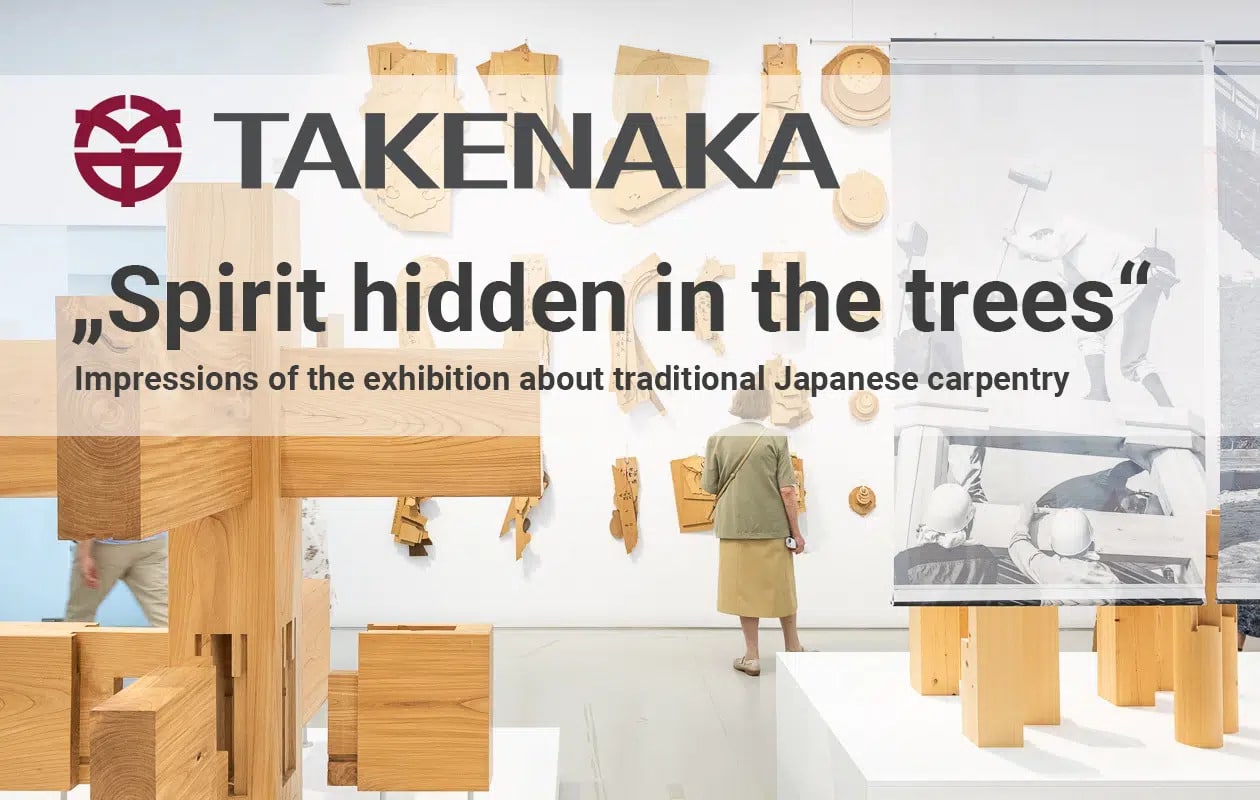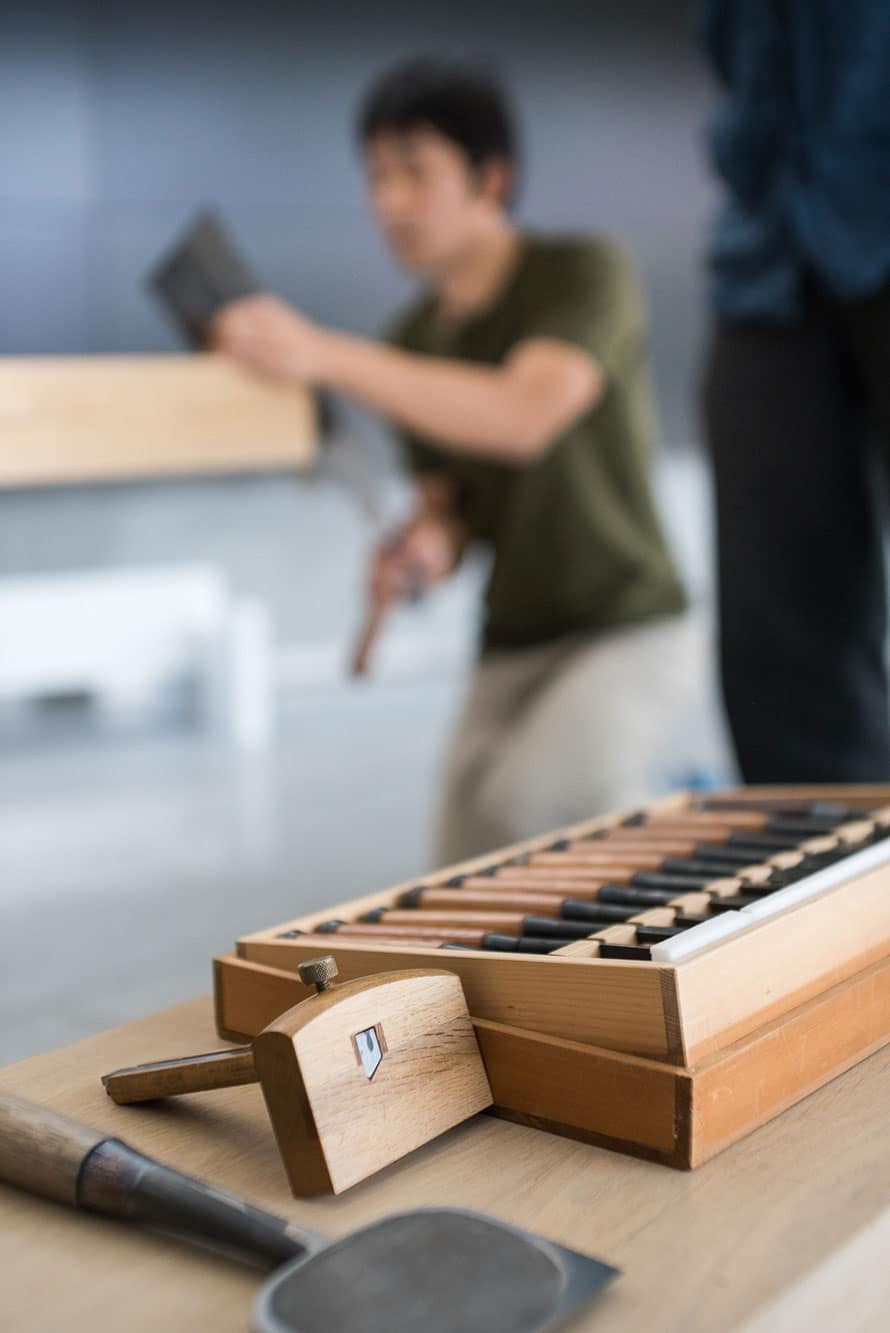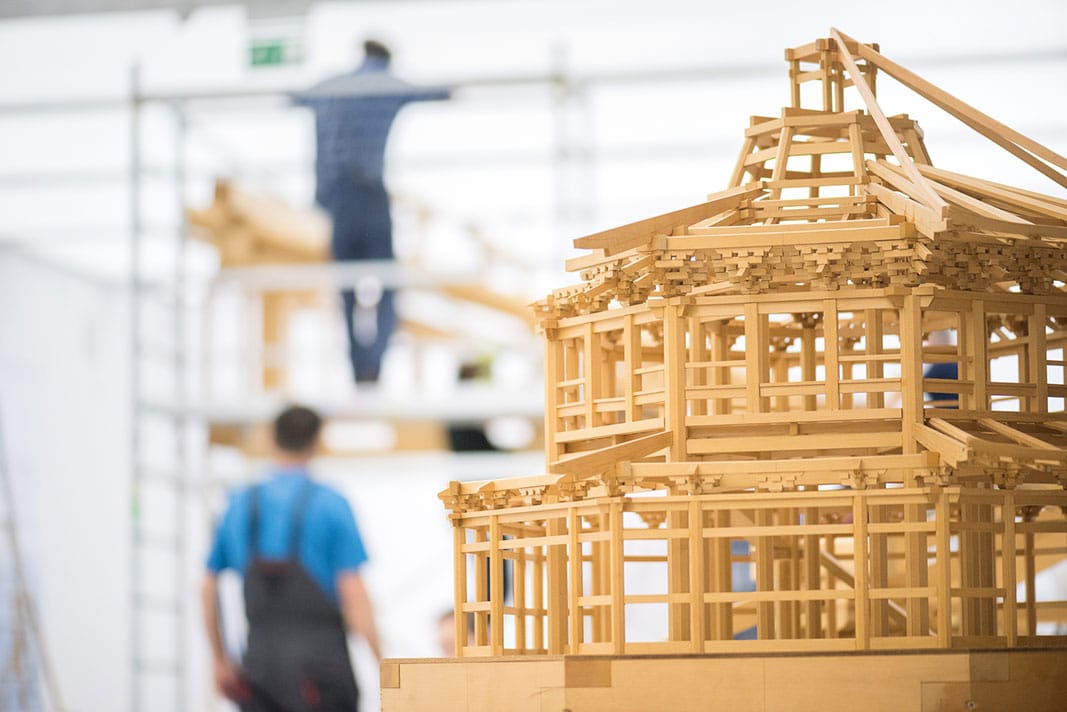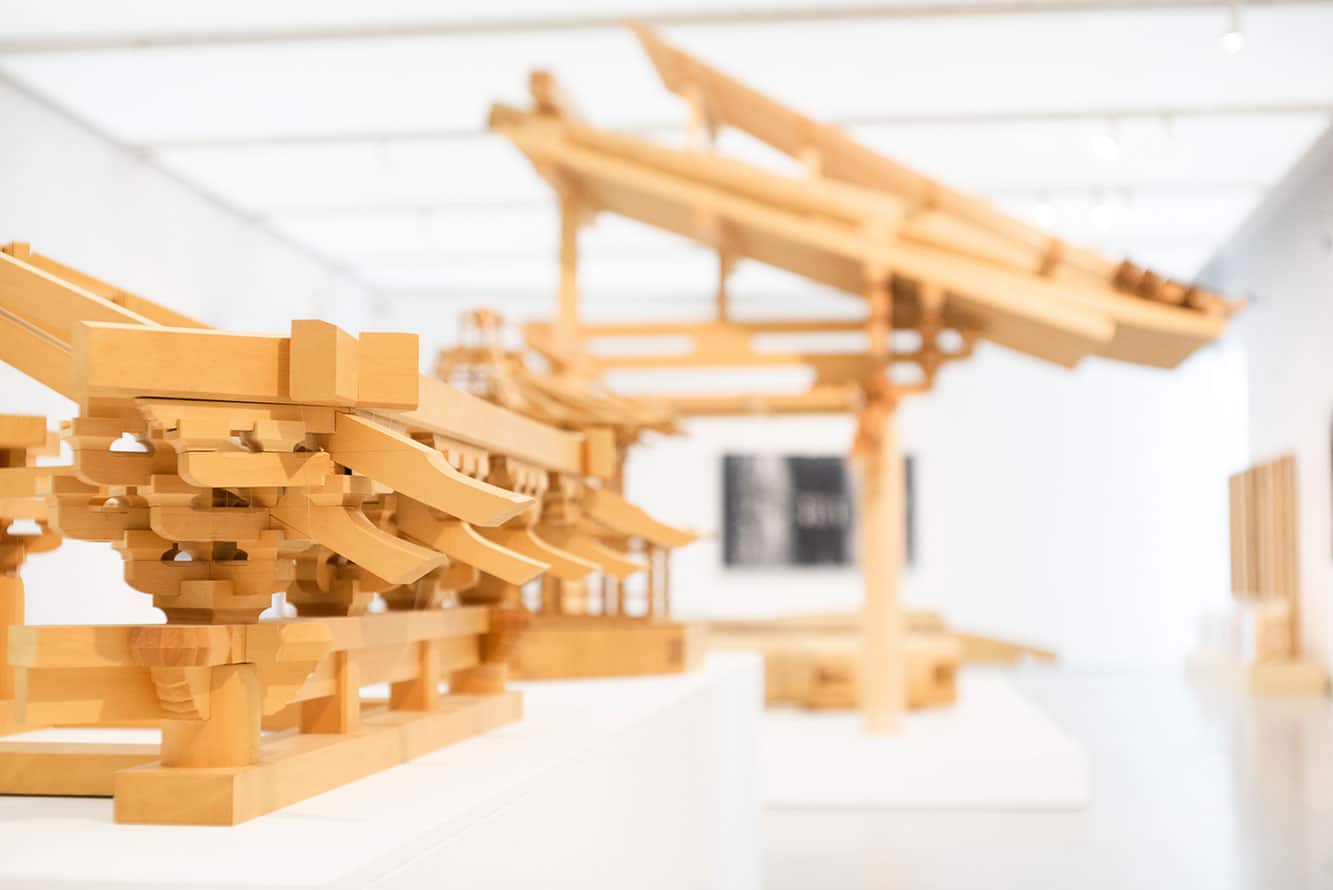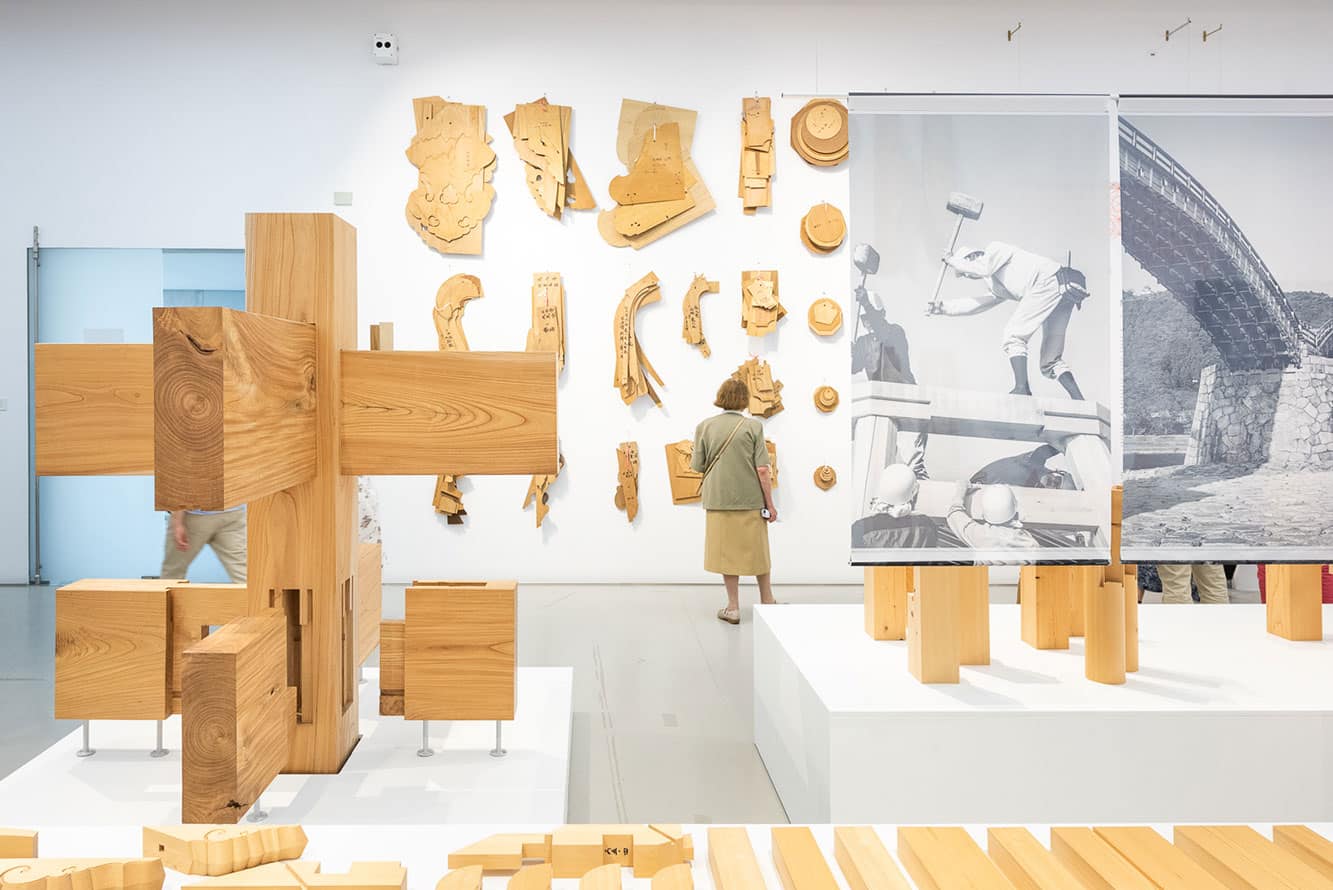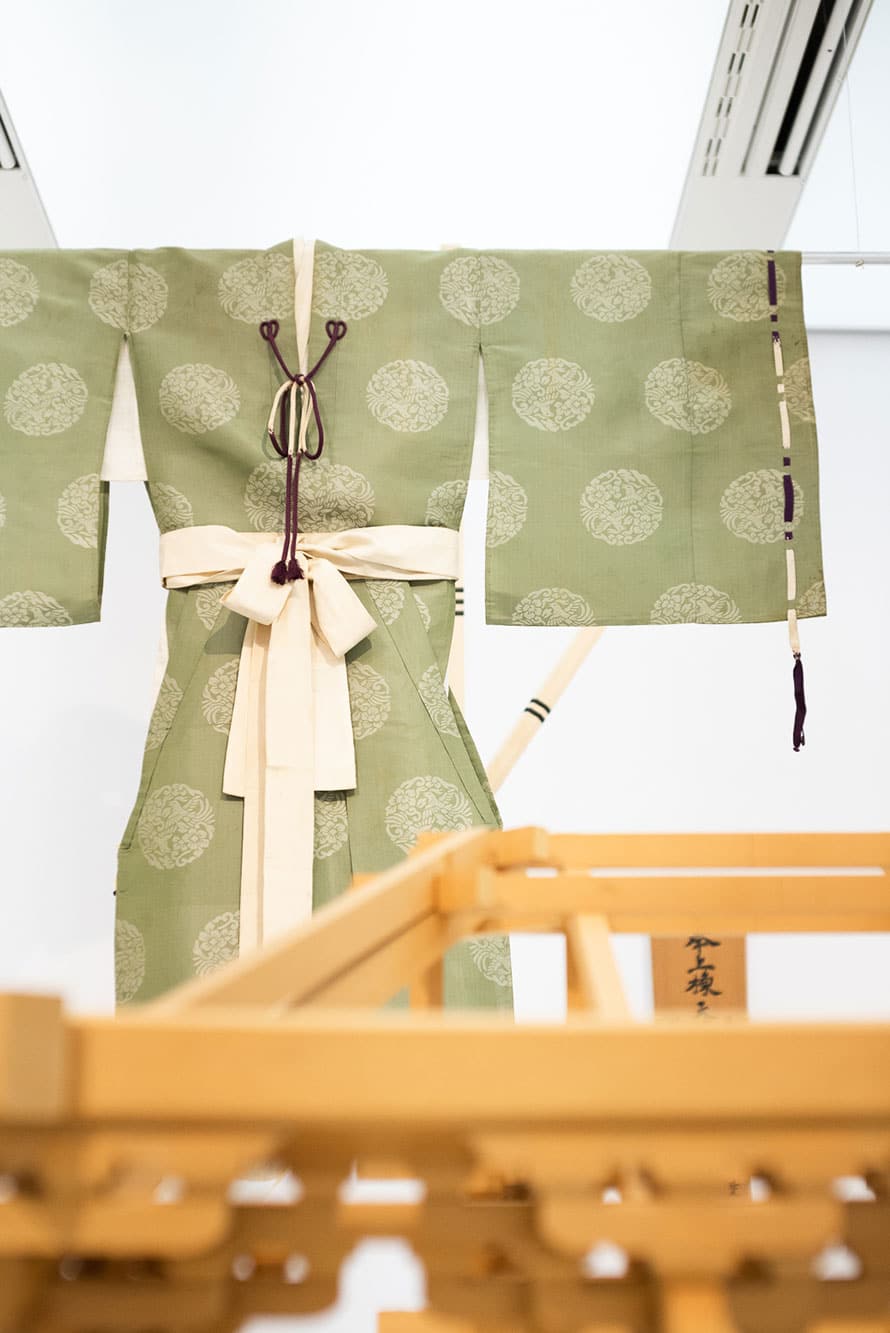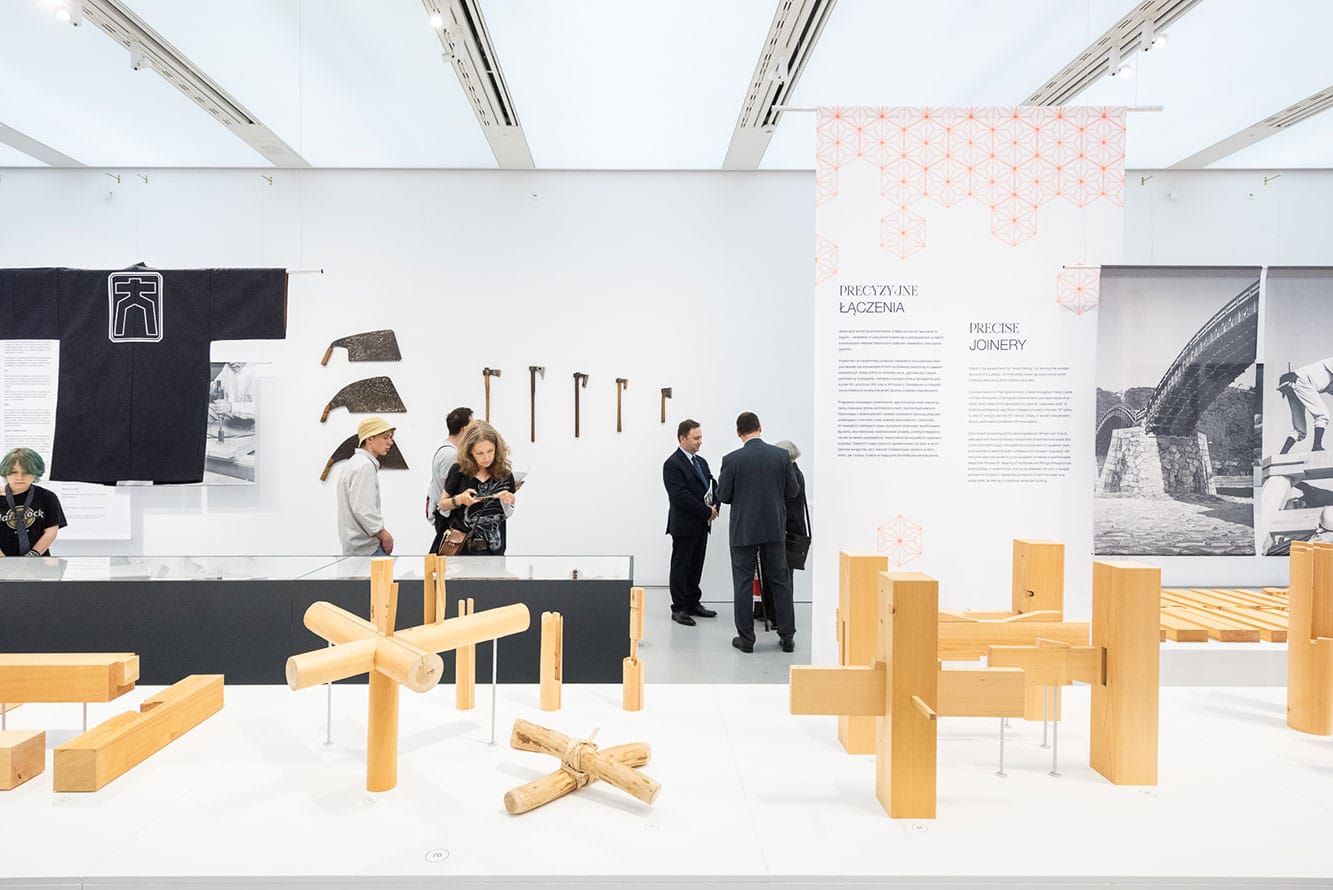Monozukuri is a Japanese term that literally means “production” or “making things”. However, it does not simply mean “production” as associated with factories or production lines. In a broader sense, it also means technological skill, know-how, but above all the spirit of Japanese manufacturing technology.
From a European perspective, this may seem strange at first. After all, what are we supposed to imagine by such a “spirit”? This spirit, which is described as monozukuri, refers to the attitude towards the manufactured product itself. It is therefore a sincere attitude towards production with pride, skill and dedication, as well as the pursuit of innovation and perfection.
“Spirit Hidden in the Trees”
Japanese wood craftsmanship in Krakow
Traditional Japanese Craftsmanship in Krakow – a special exhibition
In recent weeks, visitors to the Manggha Museum of Japanese Art and Technology in Krakow have been able to experience the idea of Monozukuri up close and get an idea of what really lies behind this “spirit of Japanese manufacturing technology”. In the special exhibition “Spirit hidden in the trees”, visitors were able to immerse themselves in the world of traditional Japanese wood craftsmanship from 19.06.2022 to 16.10.2022. One thing quickly became clear to the visitors: the carefully cultivated, centuries-old tradition of Japanese carpentry, characterised by reverence for the material and its natural origin as well as the work itself, guarantees a quality of craftsmanship that is unparalleled anywhere in the world.
The exhibition was divided into eight sections that flowed seamlessly into each other.
The exhibition tells a narrative that introduces visitors to various aspects of traditional carpentry and craftsmanship in Japan. The focus, however, is not only on the technical but also on the aesthetic features. For even with wood craftsmanship, Japan – in the spirit of monozukuri – is not only about the obvious and immediately perceptible. The exhibits speak volumes about the incomparable craftsmanship of Japanese carpenters: the precision in planning and execution, the perfectly designed tools that are always ready for use, and the aesthetics that emerge in places whose functions seem to be purely technical.
The objects are enriched with deeper spiritual or cultural values of Japanese philosophy or Shinto, as is typical in Japan. Thus they take on a completely different and above all much deeper meaning – this is where the “spirits hidden in the trees” are.
You can get some impressions of the exhibition “Spirit hidden in the trees” in Krakow in this video:
TAKENAKA and wood craftsmanship
Traditional Japanese wood craftsmanship is a matter close to TAKENAKA’s heart. For the exhibition at the Manggha Museum in Krakow, TAKENAKA Corporation provided various exhibits from its own TAKENAKA Carpentry Tool Museum in Kobe, Japan, and thus became a co-organiser. For us, it is important to convey knowledge and appreciation for the traditional craft with wood to the younger generations in Japan and now also in Europe. Furthermore, it is important for us to show the potential of wood as a building material and therefore advocate for a more sustainable future.
The TAKENAKA Carpentry Tool Museum itself comprises a collection of around 35,000 exhibits, with over 18,000 traditional carpentry tools, various other tools, for example for felling trees to blacksmithing, more than 9,000 historical documents, and 1,280 replicas and exhibits of woodcraft. The aim is to collect and preserve these disappearing tools as cultural heritage and to pass them on to the next generation through exhibitions and further research. The museum is also involved outside the exhibitions through seminars and courses that teach participants the skills, wisdom and spirit of those people who used the tools so masterfully. In this way, we are doing our part to ensure the continuation of this great tradition.
